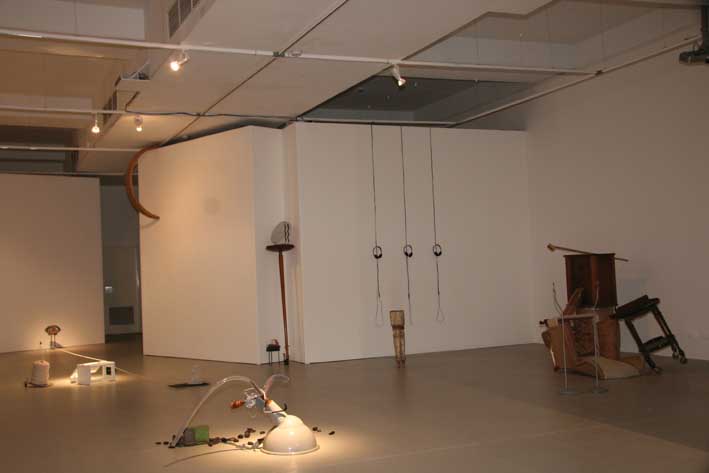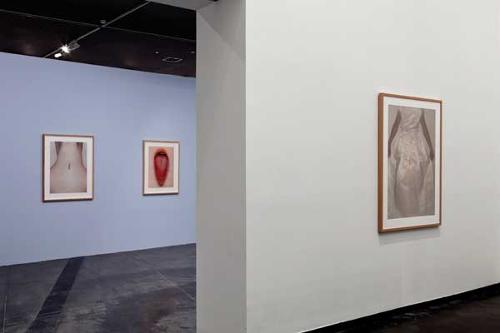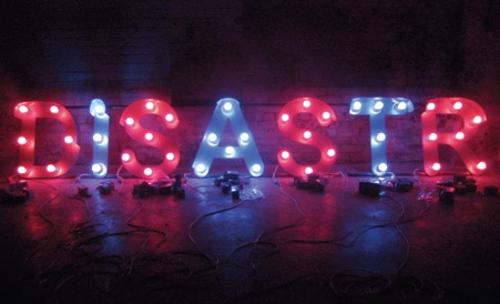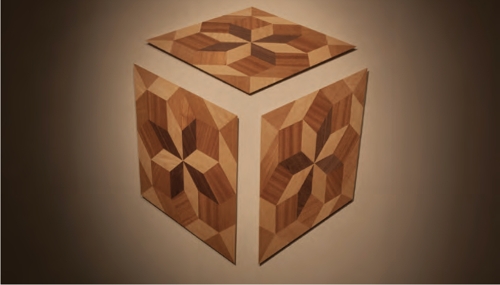
Objects are "solid parts of our action...[moments] of densification in the folds of our behaviour that is itself fluctuating…inflections that our behaviour exposes." So wrote French theorist, architect, and industrial designer Bernard Cache in 1995 in his first book Earth Moves: The Furnishing of Territories.
This year's SALA (South Australian Living Artists) Festival included an exhibition by the recently appointed Head of Sculpture and Installation at the South Australian School of Art, Julie Henderson. Through a mixture of mediums exploring our relationship with the objects that dominate the spaces in our lives Henderson invites us to think about these objects through a new and unconventional lens.
Each object in the gallery has been carefully placed to tell a story about the journey the object has taken to reach its current situation. Henderson used to be a dancer and her interaction with the space is indicative of that beginning.
The placement of each object is a performance in itself. Hunting out objects and reconstructing them to fit the narrative and the space in which they reside, Henderson argues that every object she has used has a role and function within the context of the exhibition. She states that each object went through an unsettled journey to reach its final position within the gallery space, finally going quiet when placed in its correct position.
Henderson’s work straddles genres; performance art, installation, and sculpture. Not only straddling genres but also confronting existing artistic conventions, she likes putting her toes over the edge and exploring boundaries. Her ability to manipulate found objects into new and sometimes otherworldly objects generates a conversation with the permeability of the world around us.
As the viewer enters the gallery space, you are confronted with objects that have been manipulated to completely distort their original function. Not only visually but aurally; for example the viewer is exposed to an ordinary household appliance, a free-standing fan, only it has been deconstructed and placed on its side, on the floor - thus creating a different yet equally repetitive sound, as the intact fan would have done. This positioning takes its air circulation function away completely, leaving a long, apparently functionless, mechanical device upon the floor for us to ponder.
The sound of the broken fan fills the room with an eerie, disconcerting sound that permeates the entire gallery. The considered lighting worked well to create an atmosphere that was complimentary to the arranged objects. The off centre spots added an element of something missing or of the objects having moved on their own accord – life where life is impossible… Where visual projections were used the lighting was almost nonexistent thus drawing the audience to the video content. The lighting, sound and projections worked together to emphasize and endorse the narrative Henderson was weaving.
In Linda Marie Walker’s catalogue that accompanies the exhibition she talks of lines and the passing of time through said lines. "The line is the primary form of visual expression” which Henderson demonstrates through the linear progression of her art in the gallery layout. The interactivity between materiality and the philosophical are hinted at in both the accompanying literature and the objects themselves. The complementariness of Walker’s words with Henderson’s performance intertwine to make a larger commentary on the current artistic milieu in Adelaide and further afield, opening a dialogue with audiences and practitioners alike.
In opening a dialogue Henderson is daring the viewer to react – to investigate their habits, to examine and reassess the ways we view and use objects. A Universe of Small Truths made me reflect, and walking out of the exhibition space I was compelled to look anew at my everyday behaviour within the larger context of my surroundings.












